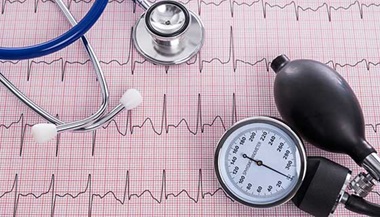Alzheimer’s Disease: What You Need to Know as You Age
Reviewed By:
An estimated 5.2 million Americans are living with Alzheimer’s disease (AD), the most common form of dementia in the world and the sixth leading cause of death in the United States. Today’s statistics are just the tip of the iceberg, however. By 2025, the number of people afflicted will top 7 million—a 40 percent jump—as baby boomers continue to age and people live longer overall.
Although the risk of AD increases with age, it is not a usual part of aging or something that should be expected in older people, says Constantine Lyketsos, M.D., director of the Memory and Alzheimer’s Treatment Center at Johns Hopkins. In fact, early onset Alzheimer’s can occur in people younger than 65, although it accounts for a small number of all cases. The rest are classified as late onset.
Alzheimer’s and many other dementias occur as a result of damage to neurons in the brain that affects their ability to communicate with each other. Over time, those neurons’ death and malfunction affects memory, learning, mood, behavior, and eventually physical functions, such as walking, and swallowing.
Prevention
While healthy living can help prevent risk factor conditions associated with Alzheimer’s disease, certain aspects on their own can also reduce the risk of AD itself. Here are some powerful places to start:
Keep moving. Numerous studies suggest that staying active may reduce the risk of AD, likely by increasing blood flow to the brain and improving the brain’s use of oxygen and glucose, as well as building denser blood vessels in the brain.
Follow a Mediterranean diet. That means lean protein with little, if any, red meat, lots of fruits and vegetables, whole grains, olive oil as the primary fat and a little wine (with your doctor’s OK). Studies have found this type of diet might reduce the risk of AD regardless of how physically active you are or if you have any cardiovascular problems.
Challenge your brain. Studies have found that people who remain intellectually active are less likely to develop dementia, as are those who remain socially engaged. Activities to consider include taking classes just for the stimulation, learning a new language, reading challenging books and learning to play a musical instrument.
Protect your head. Another risk factor for AD is traumatic brain injury (TBI), especially repeated concussions. You can reduce your risk of TBI by wearing a seat belt when you drive or are in any motor vehicle and wearing a helmet when you engage in several activities: riding a bike, a horse or any motorized device (such as a motorcycle or snowmobile); using in-line skates or a skateboard; playing contact sports, like football or ice hockey (including when batting or running the bases in baseball or softball); and skiing or snowboarding.
Diagnosis
Alzheimer’s disease has traditionally been diagnosed by excluding any other reason for these symptoms:
- Memory loss that disrupts daily life , such as forgetting important dates or events and not remembering them later, asking for the same information again and again, and relying on notes and other clues to remember things. Ironically, earlier life memories are often unaffected until later in the disease.
- Challenges planning or solving problems , such as following recipes, paying bills and concentrating.
- Problems completing everyday tasks , such as driving to a familiar location, managing a budget and remembering the rules of a game.
- Confusing time or place , such as forgetting where you are or how you got there.
- Trouble understanding visual images and spatial relationships , such as problems reading or judging distance.
- Problems speaking or writing , such as not being able to participate in a conversation and calling things by the wrong name.
- Misplacing items and not being able to retrace your steps.
- Changes in judgment , such as giving away money to unknown people or organizations.
- Withdrawing from work or social activities , often because of embarrassment or shame about changes in memory and other areas.
- Changes in mood and personality , including becoming depressed, anxious, fearful and suspicious.
Health care teams are acquiring more diagnostic tools as researchers identify new biomarkers in the brain, cerebrospinal fluid and blood that can help diagnose the disease earlier.
Alzheimer’s disease has traditionally been diagnosed as mild, moderate, or severe. However, with new imaging approaches and biomarkers, three new stages have been proposed:
1. Preclinical Alzheimer’s
This stage is marked by subtle changes in the brain, biomarkers in the cerebrospinal fluid, or blood. At this stage, the individual has not yet developed any memory problems or other symptoms.
2. Mild cognitive impairment (MCI) or Mild behavioral impairment (MBI)
At this stage, there are some changes in memory and other cognitive functions or in mood, behavior and personality, but not enough to affect independent functioning in daily life. Screening for MCI and MBI is increasingly used to diagnose people who might be at risk of developing Alzheimer’s or other dementias, with studies finding that about half of those diagnosed with MCI or MBI eventually develop dementia (although not necessarily Alzheimer’s).
3. Dementia
At this stage, people with AD exhibit severe memory loss and other cognitive and physical impairment.
Treatment
There is no cure for AD, but there is a lot that can be done to improve symptoms and quality of life for both patients and caregivers. The goal of care is to maintain a good quality of life, says Lyketsos. That involves a “package” of memory care activities using available FDA approved medications, coordinating care between clinicians, and participating in social activities; and for caregivers, joining a support group.
Drugs are approved for treating the cognitive symptoms of Alzheimer’s disease but not the underlying causes. The benefits are relatively slight, slowing the progression of AD by six to 12 months.
- Cholinesterase inhibitors prevent the breakdown of acetylcholine, an important chemical for learning and memory.
- The drug memantine is typically used in the later stages of Alzheimer’s and may be combined with a cholinesterase inhibitor. It works by regulating glutamate, another chemical involved in learning and memory.
- Research into new treatments for Alzheimer’s disease—specifically drugs that target the disease and not just its symptoms—is very active, both at Johns Hopkins and elsewhere. The best hope lies in attacking abnormalities commonly seen in Alzheimer’s: amyloid beta-plaques, tau protein tangles and inflammation.
People with Alzheimer’s disease may also be prescribed other medications to manage symptoms, including antidepressants or antipsychotics to reduce depression, agitation, anxiety, or to improve sleep. Antipsychotics when indicated might be used to manage severe symptoms such as aggression or delusions but should be used under the guidance of a specialist.
Learn more about the symptoms, diagnosis and treatment of Alzheimer's disease in the Health Library.
Living With AD
Living with AD means living as healthy a life as possible and maintaining regular activities for as long as possible. In addition, create support systems and take these proactive measures:
Pull together a care team. It’s best to have a team of clinicians—including physicians; mental health professionals; occupational, speech and physical therapists; nutritionists and others—to help manage the disease. Also connect with nonmedical professionals, such as a financial adviser and attorney, to prepare various legal and medical documents, as well as to plan to manage the cost of care and your family’s future.
Treat neuropsychiatric symptoms such as depression or agitation. Talk to your health care providers about ways to manage these symptoms—with or without medication.
Put exercise on your schedule. Numerous studies have found that regular physical activity not only protects against AD but slows its progression—possibly by producing a stress hormone that protects the brain from memory changes.
Get a good night’s sleep. Poor sleep may speed the progression of Alzheimer’s disease. Thus, Lyketsos says, it is important to practice good sleep hygiene.That means using the bedroom only for sleep, making the room as dark and quiet as possible, having a presleep routine you practice every evening to prepare you for sleep, and going to bed and getting up at the same time every day.
Give yourself time to cope. Learning that you have a degenerative disease like AD may be difficult for you and your family. A support group can help.
Research
Johns Hopkins researchers and clinicians continue their work in understanding and treating Alzheimer’s in ways that can translate into better health today. Notable research includes these findings:
It may become possible to detect Alzheimer’s disease before symptoms start. Researchers at Johns Hopkins found that the ratios of tau proteins and amyloid beta-proteins in cerebrospinal fluid could predict mild cognitive impairment more than five years before symptoms begin, while changes in the ratio over time also predicted cognitive changes.
Sleep duration and quality may be linked to a biomarker of Alzheimer’s disease. Johns Hopkins researchers found that the less people slept, and the worse their sleep, the more likely they were to show higher levels of amyloid beta-proteins in their brains.
Scientists have plotted the maze-like paths taken by the first cells to degenerate in people with Alzheimer's disease. Cholinergic neurons, some of the largest nerve cells in the mammalian brain, are the first cells to degenerate in people with Alzheimer's disease. These neural maps may help researchers understand what goes wrong during the progression of the disease.
#TomorrowsDiscoveries: Using Data to Diagnose Brain Diseases | Michael I. Miller, Ph.D.
Johns Hopkins researcher Michael Miller explains how we can use data to create better diagnostic tools for neurodegenerative disorders like Alzheimer's disease.
For Caregivers
Family and friends provide the bulk of care for people with AD, which can be incredibly stressful and affect caregivers’ physical and mental health. You can help your loved one live with the disease with specific actions like these:
Encourage independence. This is particularly important in the early stages of the disease, when a person may still function quite well. So treat him as an adult, not a child, and give him as much independence as possible.
Set structure. A scheduled day that provides activities for people with AD helps manage and even prevent neuropsychiatric symptoms, such as agitation and depression, says Lyketsos.
Be your loved one’s memory. It’s up to you to remember appointments, words or names, people and places. Gently remind your loved one of these things when appropriate, but don’t embarrass her, says Lyketsos.You’ll also need to become (or appoint) the person who remembers medications and manages your loved one’s finances.
Listen. The frustration, depression, anxiety and anger that come with an AD diagnosis and the disease’s prognosis are tremendous. Be there to listen. But make sure you have your own support system that helps you with your frustrations and anger.
Live in the day. You can’t change what happened yesterday, and you can’t predict what will happen tomorrow. But you can enjoy the time you have with your loved one today.
Reduce your expectations. If you keep expecting your loved one to remember tasks, things you said and people’s names, you will be disappointed. However, if you don’t expect this and he does remember these things, you will be pleasantly surprised.
Treatment Memory Care Services from the Comfort of Home

Definitions
Amyloid-beta proteins (am-uh-loyd bay-tuh pro-teenz): The sticky proteins that form brain plaques. Amyloid beta forms when proteins are removed from the outer wall of neurons. Instead of doing beneficial jobs, they clump together. Small clumps may interfere with the signals between brain cells. But when the clumps keep growing, they create the well-known plaques found in the brains of people with Alzheimer’s disease.
Biomarkers (buy-oh-mahr-kerz): Factors that can be measured and used to give a clearer picture of a person’s health now and in the future. Biomarkers include blood pressure, cholesterol, blood sugar and bone-density test results. Researchers use biomarkers in studies to find new connections between risks, such as chronic inflammation, and health.
Blood vessels (veh-suls): The system of flexible tubes—arteries, capillaries and veins—that carries blood through the body. Oxygen and nutrients are delivered by arteries to tiny, thin-walled capillaries that feed them to cells and pick up waste material, including carbon dioxide. Capillaries pass the waste to veins, which take the blood back to the heart and lungs, where carbon dioxide is let out through your breath as you exhale.
Degenerative disease (dih-jen-er-uh-tiv dih-zeez): An illness that causes ongoing, increasing harm to tissue in the body. Examples include Alzheimer’s disease and Parkinson’s disease, both of which affect the brain and nervous system; osteoarthritis, which affects joints; degenerative disease of the spine; and age-related macular degeneration, which affects the eyes.
Dementia (di-men-sha): A loss of brain function that can be caused by a variety of disorders affecting the brain. Symptoms include forgetfulness, impaired thinking and judgment, personality changes, agitation and loss of emotional control. Alzheimer’s disease, Huntington’s disease and inadequate blood flow to the brain can all cause dementia. Most types of dementia are irreversible.
Inflammation (in-fluh-mey-shun): The redness and warmth around a cut or scrape is short-term inflammation, produced by the immune system to aid healing. But another type called chronic inflammation, triggered by compounds from abdominal fat, gum disease and other factors, lingers in the body. Research suggests this type increases the risk for heart disease, diabetes, dementia and some forms of cancer.
Lean protein: Meats and other protein-rich foods low in saturated fat. These include boneless skinless chicken and turkey, extra-lean ground beef, beans, fat-free yogurt, seafood, tofu, tempeh and lean cuts of red meat, such as round steaks and roasts, top loin and top sirloin. Choosing these can help control cholesterol.
Neurons (nyoo-rons): Brain cells that communicate with one another via an enormous network of hairlike extensions called axons and dendrites, which send and receive electrical signals. The human brain contains an estimated 100 billion neurons. These cells and networks store memories and control thinking speed and ability. Exercise, and emerging evidence has suggested a healthy diet, help the brain grow new neurons and connections at any age.
Risk factor: Anything that boosts your chances of getting a disease. For example, smoking is a risk factor for cancer, and obesity is a risk factor for diabetes.
Tau Proteins (taw pro-teenz): A protein that makes up the tangles found inside the brain cells in people with Alzheimer’s disease. In healthy brain cells, tau helps keep straight the tiny tubes that are used to move food and other important materials to where it is needed. But when strands of tau twist together and form tangles, food or building supplies can no longer move through the cells, which ultimately die.
Whole grains: Grains such as whole wheat, brown rice and barley still have their fiber-rich outer shell, called the bran, and inner germ. It provides vitamins, minerals and good fats. Choosing whole grain side dishes, cereals, breads and more may lower the risk for heart disease, type 2 diabetes and cancer and improve digestion, too.








